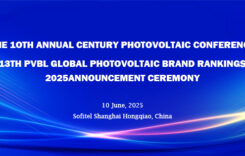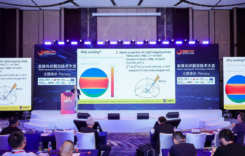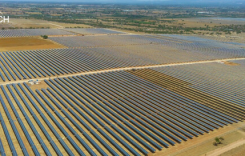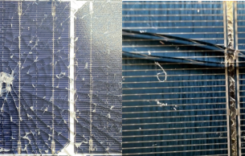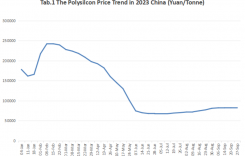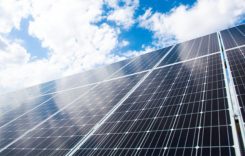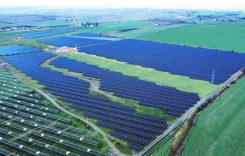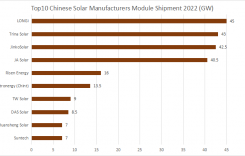PVTIME – On 23 September, a team led by Professors Stefaan De Wolf and Xu Fuzong of Saudi Arabia’s King Abdullah University of Science and Technology (KAUST) published new research in Nature Materials. The study focuses on perovskite/perovskite/silicon triple-junction solar cells and addresses the long-standing issue of phase instability in such devices.
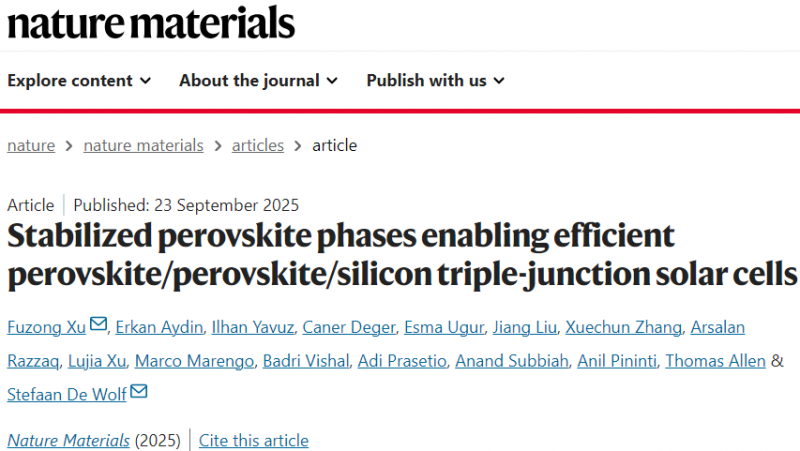
The team used 3-aminopropanoic acid iodide salt to stabilise the perovskite lattice. This molecule bonds its carboxyl group to lattice cations, thereby increasing phase transition energy barriers and suppressing defect formation. This boosts the phase stability and optoelectronic performance of the cell’s middle and top perovskite layers. The result is a triple-junction cell with 28.7% efficiency (measured over a 1 cm² aperture area), alongside improved repeatability (PCE variance reduced from 4.11 to 1.19) and long-term stability.
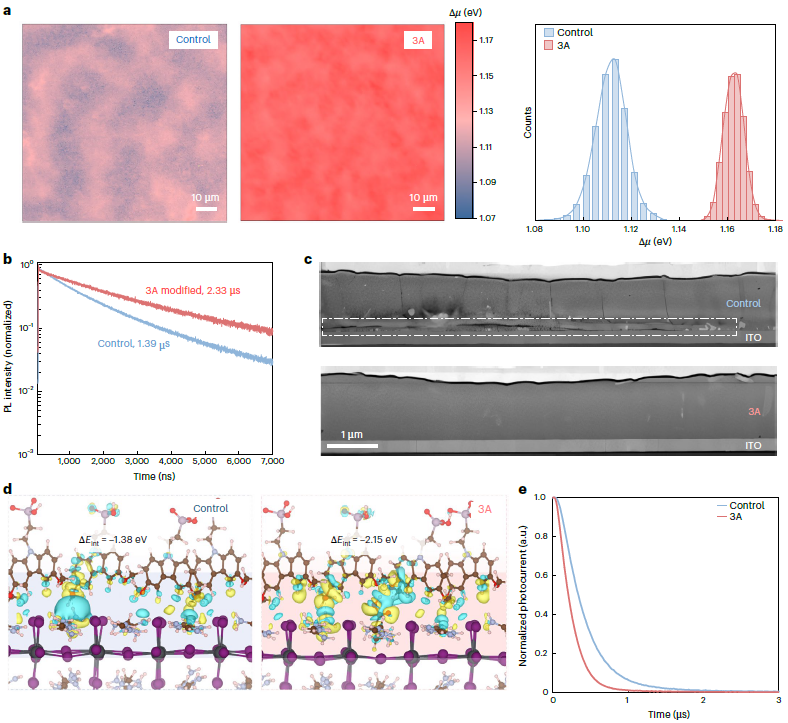
Key tests confirmed the effectiveness of the design: the modified 1.50 eV middle perovskite layer took over three days to form its δ phase in 60% humidity, whereas the 2.0 eV top layer showed no phase separation after 45 minutes of sunlight exposure. Density functional theory calculations also showed that 3A increased the α→δ phase transition energy barrier by around four times and raised the Schottky vacancy formation energy, thereby blocking the drivers of phase change at the energy level.
In addition to improving stability, 3A enhances the electronic properties of the perovskite film: time-resolved photoluminescence measurements revealed that the carrier lifetime increased from 1.39 μs to 2.33 μs. Higher quasi-Fermi level splitting indicates reduced non-radiative recombination. It also strengthened the interactions between the perovskite and the self-assembled molecular layers, thereby improving the efficiency of charge extraction.
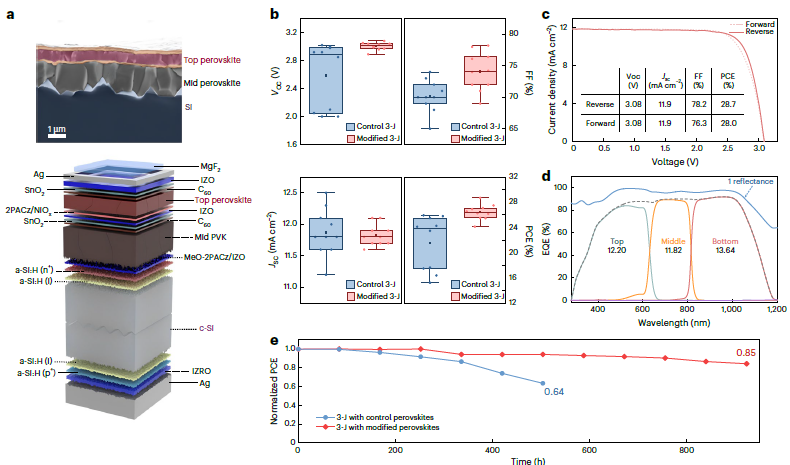
Stability trials highlighted the robustness of the encapsulated single-junction devices, which retained 89% of their initial efficiency after 1,000 hours of ageing at 85°C/85% relative humidity, and of the triple-junction cells, which retained 85% of their initial efficiency after 800 hours of continuous sunlight. This breakthrough sets a new standard for efficiency, advances the commercial readiness of perovskite multi-junction cells and offers a new approach to regulating perovskite phase stability. It demonstrates the significant potential of molecular engineering in photovoltaics.

Scan the QR code to follow PVTIME official account on Wechat for latest news on PV+ES


